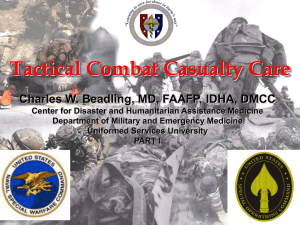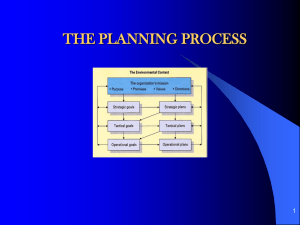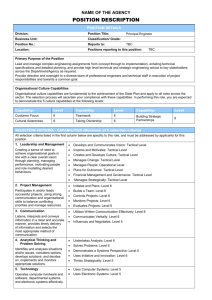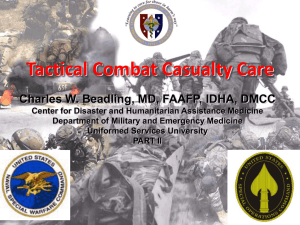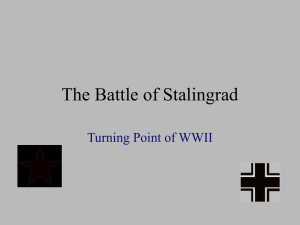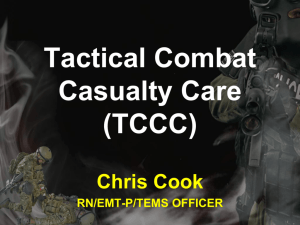The BCCTPC Tactical Paramedic exam content
advertisement
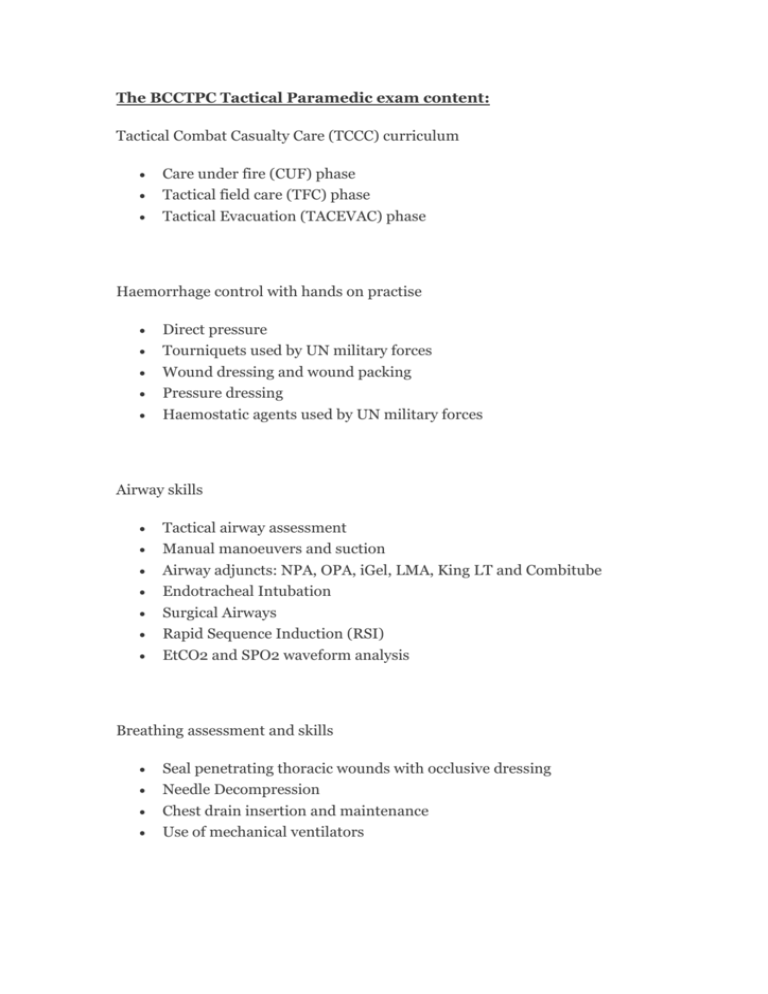
The BCCTPC Tactical Paramedic exam content: Tactical Combat Casualty Care (TCCC) curriculum Care under fire (CUF) phase Tactical field care (TFC) phase Tactical Evacuation (TACEVAC) phase Haemorrhage control with hands on practise Direct pressure Tourniquets used by UN military forces Wound dressing and wound packing Pressure dressing Haemostatic agents used by UN military forces Airway skills Tactical airway assessment Manual manoeuvers and suction Airway adjuncts: NPA, OPA, iGel, LMA, King LT and Combitube Endotracheal Intubation Surgical Airways Rapid Sequence Induction (RSI) EtCO2 and SPO2 waveform analysis Breathing assessment and skills Seal penetrating thoracic wounds with occlusive dressing Needle Decompression Chest drain insertion and maintenance Use of mechanical ventilators Circulation assessment and skills Shock assessment and treatment Vascular access with IO, IV, ORS and proctoclysis Medication Administration Analgesia and sedation agents OTC medications Advanced pharmacology for tactical paramedic Neurological Assessment Manage suspected spinal injuries Differential diagnosis of a comatose patient Manage patients with seizures Assess intracranial pressure Manage patients with head injuries Advanced pharmacology for neurological management Trauma Management Tactical casualty triage using START and SALT MARCH algorithm: massive bleeding, airway, respiration, circulation, hypothermia/head injuries Advanced pharmacology for trauma management Fracture dislocation management Reduce dislocations Burn Patients Perform an assessment of the burn patient Calculate the percentage of TBSA Calculate fluid replacement with Parkland and Brooke formula Remote Assessment and Long Term Care Situational variables impacting prolonged field care Telemetry and communications leading to an evacuation plan Rescue / Extraction Perform high threat extractions Methods of rescue breaching Evacuation through drywall, cinderblock, windows Extraction methods based on the casualty’s specific injuries Incident Command System Use a centralised command and control system Interface with local medical authority Tactical Team Operations Personal protective equipment Breaching/diversionary Firearm familiarisation Team medical equipment Basic tactical movement techniques Situational awareness and team safety in tactical operations Medical Mission Analysis Medical threat assessment Environmental hazards Tactical threats Hazardous materials WMD/CBRNE Legal Aspects of TacMed HIPAA Evidence preservation and chain of custody Scope of Practice Illegal search and seizure and other fourth amendment issues Force Health Protection Manage work/rest/sleep cycles Evaluate pertinent medical history of assigned personnel Identify immunisations and chemoprophylaxis Hydration for an operational setting Nutrition and food safety Field sanitation Tactical protective equipment Manage Injuries and Complications Associated with Less Lethal Weapons Chemical munitions including CS and OC Electrical conductive weapons Impact weapons Light/sound diversionary devices Canine Management Working dog trauma Environmental emergencies in dogs



